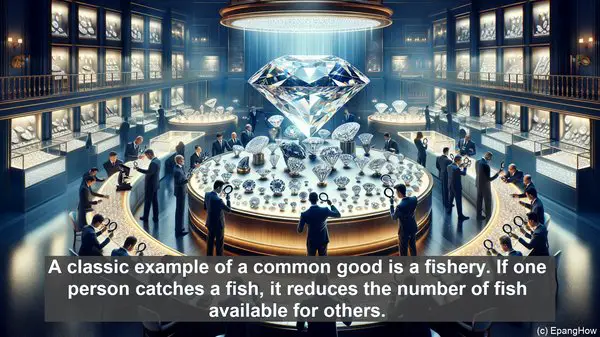Introduction: The Realm of Goods
Greetings, ladies and gentlemen! In the vast realm of economics, goods play a pivotal role. They are the tangible or intangible items that hold value and satisfy our needs and desires. Today, we’ll dive into the realm of goods, specifically focusing on the distinction between private goods and common goods.
Private Goods: Exclusivity and Rivalry
Private goods, as the name suggests, are items that are privately owned. They possess two key characteristics: exclusivity and rivalry. Exclusivity means that the owner has the right to exclude others from using or accessing the good. Rivalry refers to the fact that the consumption of the good by one individual diminishes its availability for others. A classic example of a private good is a slice of pizza. If I consume it, no one else can. Moreover, I can choose to exclude others from having a slice.

Common Goods: Shared Resources
On the other hand, we have common goods, also known as common-pool resources. These are goods that are non-excludable but rivalrous. Non-excludability means that it is difficult, if not impossible, to prevent others from accessing or using the good. Rivalry, as we discussed earlier, implies that the consumption of the good by one person diminishes its availability for others. A classic example of a common good is a fishery. If one person catches a fish, it reduces the number of fish available for others.

The Tragedy of the Commons
The concept of common goods brings us to the ‘Tragedy of the Commons.’ Coined by ecologist Garrett Hardin, this term refers to the depletion or degradation of a shared resource due to individual self-interest. Since common goods lack exclusivity, individuals may have an incentive to exploit them to their advantage, leading to overuse or even depletion. This phenomenon can be observed in various scenarios, such as overfishing or deforestation.
Public Goods: A Brief Mention
While our primary focus today is on private goods and common goods, it’s worth mentioning public goods. Public goods are non-excludable and non-rivalrous. They are typically provided by the government and benefit society as a whole. Examples include street lighting or national defense. The provision of public goods often involves collective action, as their benefits extend to all, regardless of individual contributions.
